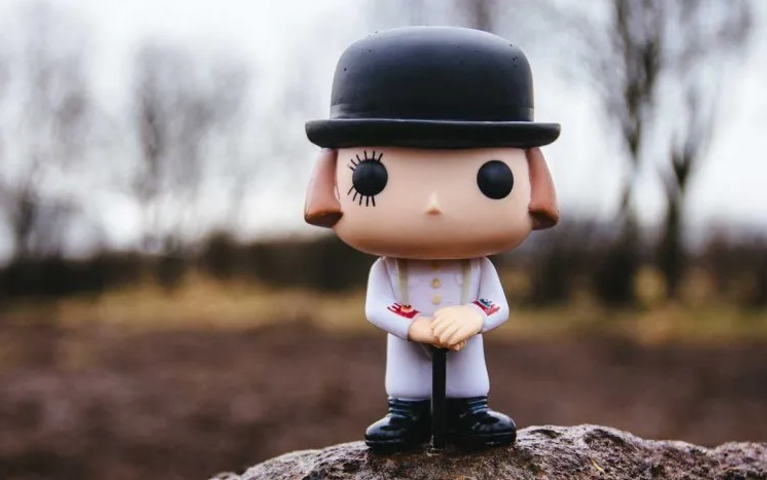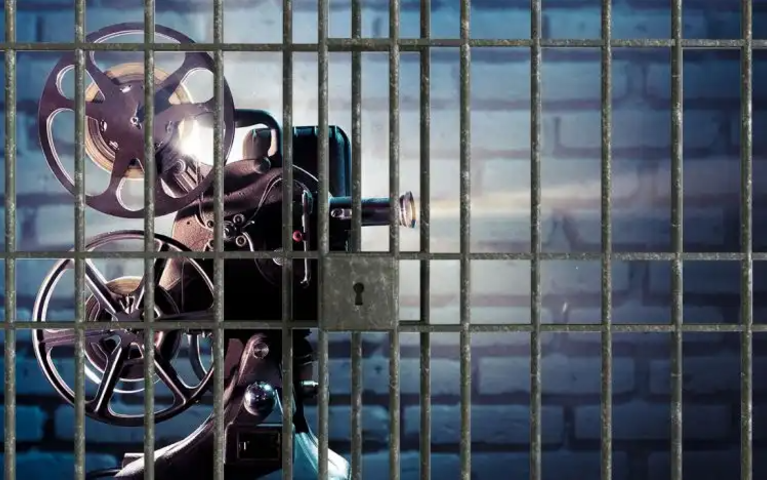Alex DeLarge: The glamorous psychopath

In the age of the anti-hero, A Clockwork Orange’s hero, Alex, stands out as a prototype. Stanley Kubrick’s masterpiece created a character, who is the prime presentation of a horrifically evil, yet charismatic and interesting material of the anti-hero type. Known as the glamorous psychopath.
The phrase “anti-hero” has taken on a looser and less specific definition in recent times as a person who, even if wrong, is the main character whom the audience is rooting for and identifying with. In the case of the glamorous psychopath, and unlike with other villains, it’s not the backstory or some justification like cancer, abuse, or oppression that explains behavior and keeps us grudgingly sympathetic towards the horrible hero. With Alex Burgess, it is his pure elegance and sophistication. We are fascinated because he is more intelligent, and more cultured. In the years since “A Clockwork Orange”, we have witnessed more examples of the glamorous psychopath type such as: Catherine Trammell in “Basic Instinct”, Hannibal Lecter in “Silence of the Lambs”, Leon in “Leon: The Professional”, and Patrick Bateman in “American Psycho”.
Let’s look closer at how Burgess’ dystopian novel, Kubrick’s images, music, direction, and Malcolm McDowell’s magnificent acting work together in “A Clockwork Orange” to elevate Alex from a teenage thug to a cult anti-hero. The first thing you would notice is Alex’s personality; Alex is highly sophisticated and cultured, embodying a civilized intelligence that sets him above and apart from his “droogies”. As Burgess puts it, “Alex is a human being endowed, even over-endowed with the three essential attributes of man: first, he loves beauty which he finds in Beethoven`s music; second, he is aggressive; and thirdly, Alex is more intelligent and well-spoken than his “droogs” and the other characters. He quotes, sings and dances, using the Russian word: Droogs. Alex is ridiculously imaginative, and his daydreams are humorous and vile. He is also the only character in the movie who has a genuine appreciation for art. You don’t usually imagine a thug enjoying sophisticated art, which builds curiosity in the audience. On another level, we want evil people to be ignorant and simple; it is scarier when they are not, it is easier when we can justify it as evil is committed by someone who doesn’t know any better. In short, Kubrick presents Alex as more human than any other character in the film.
Alex narrates the story, so this privileges his perspective, and he always refers to himself while speaking directly to the viewers as “your storyteller”, and “your humble narrator”, but it’s not just that; he tells in a language of his invention, called “Nadsat”, which is a mix of old English, rhyming slang and anglicized Russian. For example: “appy polly loggy” (n. apology). Moreover, the visual language through which Kubrick is talking to us and the way he uses his camera to represent Alex is worth noting; he is always at the center of the frame distorting whoever or whatever it is at the sides of the image, leaving Alex the main subject of every frame in the film. In a way, Kubrick is forcing us to see the world as Alex does. In addition to Alex’s honesty, in the world of “A Clockwork Orange”, Alex is not alone in his criminal activities; there are other bands of criminals just as violent and morally bankrupt, if less stylish. For example, Dr. Brodsky and his colleagues, while “curing” others of cruelty, obviously enjoy scenes of Alex getting beaten up and humiliated on stage. Alex is subjected to the most dreadful rehabilitations techniques which the government took part in to turn him into something less than humane in order to make him good. The moral idea of the story is that man must have a choice: to be good or evil, even if he chooses wrong. Unlike all these hypocritical characters, who pretend to be reasonable and socially responsible, Alex, at least, is honest about his evil side with the audience from the start, which also helps to get us on his side. To deprive a man of his choice makes him less than human.
Kubrick shoots Alex and the droogies’ “ultra-violence” in a way that makes it feel unreal and distant; they sing while breaking into people’s houses and raping their wives, they laugh, they jump as if they are on a school fieldtrip. The violent scenes are often set to classical music or slowed down, their beating is choreographed like a dance. Alex and his crew are dressed in matching white suits, and they end their violent ride at the milk bar sipping glasses of milk. And, yes: it is unsettling to watch these violent, oversexed deviants drinking milk; this simple and subtle action that represents innocence and purity. But, maybe Kubrick wanted us to reflect on their abandoned inner child?
“A Clockwork Orange” is not a film where you sit back, eat your popcorn and enjoy watching it. It absolutely demands that you pay your full attention just like Alex says in the film when the psychiatric forces him to watch violence acts on a wider screen: “It’s funny how the colors of the real world only seem really real when you viddy them on the screen.” That’s why Kubrick creates a balance where the viewer knows for sure that Alex is a horrible human being, but we don’t side with his mistreatment. To stretch it more, he did not want us to interpret what happens to Alex as mistreatment and not a due punishment. The Clockwork Orange world ends up looking more like a funhouse mirror reflection of our world rather than a real dystopian future. The central idea of Burgess’ book has to do with the question of free will. Is it better to be destructive of one’s own free will than to be good through scientific brainwashing? It gives us a glimpse into what people could be capable of, and why the morality line is always shifting. As for the book’s title, Burgess brought together the organic, lively, sweet, the “orange”, and the cold, the disciplined “clockwork” in this sour-sweet paradox.
Kubrick completely excluded the last chapter of the book, in which Alex, wiser and calmer at the ripe old age of 18, starts to reevaluate his evil ways. Kubrick dismissed it, saying, “Unconvincing and inconsistent with style and intent of the book,” and chose to end the movie with Alex’s return to his natural violent state. By completing the film this way, Kubrick seems to say: Alex is violent again, and all is well with the world. On another note, Stanley Kubrick was asked if evil characters attract him? He said: “of course, not; but they are good for stories; villains are always more interesting characters. It is tough to make good people interesting.”
It is worth mentioning that after “A Clockwork Orange” was widely distributed in 1972 and 1973. The director himself, took the decision to withdraw his film in Britain for being too controversial due to its depictions of sexual violence. The film was banned in some other countries like Ireland until 2000 and in Singapore until 2011. After Kubrick died in 1999, Warner Bros International announced that the uncut version of “A Clockwork Orange” would return to British screens.
You can watch “A Clockwork Orange” in addition to “2001: A Space Odyssey,” “The Shining,” “Full Metal Jacket,” and “Barry Lyndon” in Stanley Kubrick Rare Collection at the Film Library.
*Samah Hourani is librarian at the Film Library – The Royal Film Commission – Jordan.















